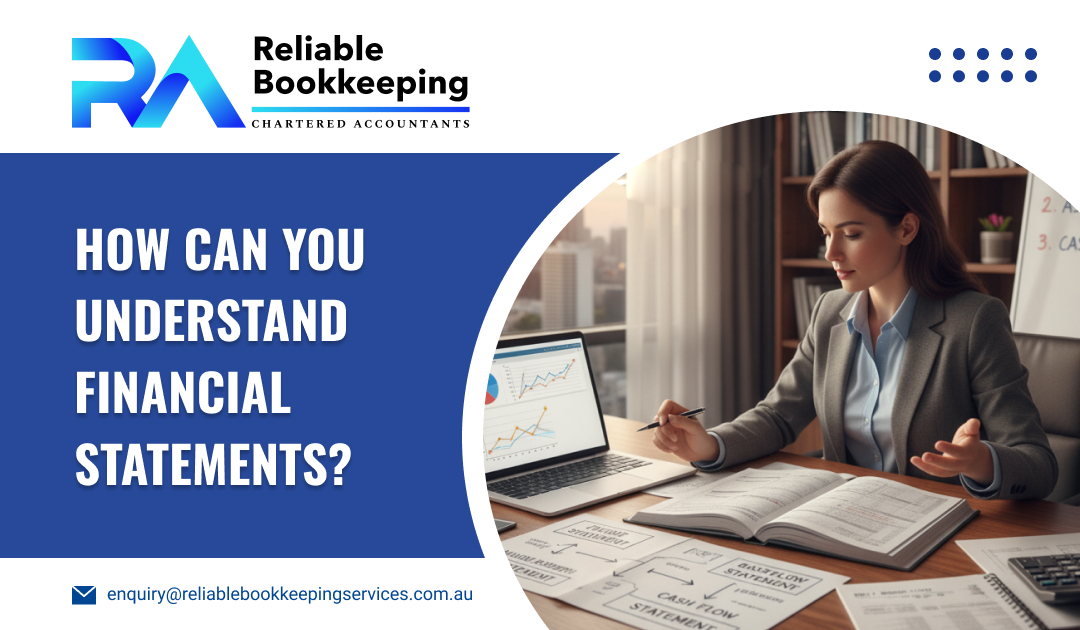To make informed business and investment decisions, it’s essential to read and understand financial statements. Common financial statements include income statements, balance sheets, cash flow statements, and statements of shareholders’ equity. These financial reports provide an insight into a company’s performance. By reading, analysing, and understanding these reports, you can evaluate the liquidity, profitability, and financial condition of a company. If you find it difficult to understand these statements, you can seek help from a small business bookkeeper or an accountant.
Why is It Important to Understand Financial Statements?
Financial reports act as a report card that includes financial analysis of a company. These reports create a summary of a company’s financial performance over a specific time period, whether it’s a quarter, a month, or a year. These financial reports not only provide numbers, but they also explain how your business is doing. Your ability to read and understand financial statements gives you the confidence to make informed business decisions. It’s not just about understanding how much profit you are making or losing, it’s about understanding how your business is doing. With these financial reports, you can understand your company’s strengths and weaknesses and identify potential opportunities.
What Financial Statements Do You Need to Know?
Understanding financial statements is crucial for a clear view of a company’s performance. These financial statements create a strong foundation for anyone making business decisions, whether you are a business owner, an investor, or even a lender. These financial reports are also used by tax accountants as they help them in the right tax return lodgment. However, make sure the tax accountant you are hiring is experienced and can understand financial statements easily. Even if you are searching for ‘tax accountants near me’, make sure they use financial statements in the right way.
The Balance Sheet
The balance sheet acts as a snapshot of your company’s financial condition at a specific time period, generally the end of the financial year. It showcases what you own, what you owe, and what’s left for the owners. A balance sheet helps you evaluate your company’s liquidity and solvency.
- Assets: Assets are what your company owns. These are categorised as either current assets or non-current assets.
- Liabilities: Liabilities are what your company owes. Current liabilities are usually due within one year. On the other hand, non-current liabilities are due after one year.
- Shareholders’ equity: It shows the claim of an owner after all liabilities have been settled.
The Income Statement
An income statement is also called a profit and loss statement, which reports the company’s expenses, revenue, and profits over a specific period. It aims to determine the company’s profitability to know whether the company is making a profit or losing money. If you don’t know how to create and analyse financial statements, you can seek accounting and bookkeeping services Melbourne, so you can be sure to get accurate financial reports. Here’s how to read and analyse an income statement:
- Profitability ratio: Key metrics, including operating profit margin, gross profit margin, and net profit margin, can help check how well the company produces profits from its operations.
- Comparison across periods: Checking income statements year-over-year can help you assess how well your company is managing its expenses and revenues.
The Cash Flow Statement
As the name implies, cash flow statements help in tracking the cash flow in and out of a company over a specific period. The cash flow statement primarily focuses on the cash flow of the company. It helps you understand if you have sufficient cash to pay bills, meet financial obligations, or invest in growth. Here’s how to read and analyse a cash flow statement:
- Operating cash flow: Your company needs to have positive cash flow from operations. Negative cash flow from operations means you have liquidity issues, even if your business is making a profit on paper.
- Free cash flow: This indicates cash left after capital expenditures. It indicates whether you can reinvest in the business.
Conclusion
It’s essential to read and understand financial reports for making informed business decisions. If you want accurate financial statements, you can get reliable bookkeeping services and accounting solutions for your business.

